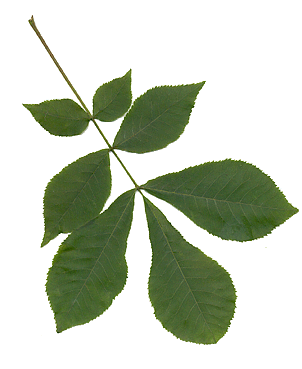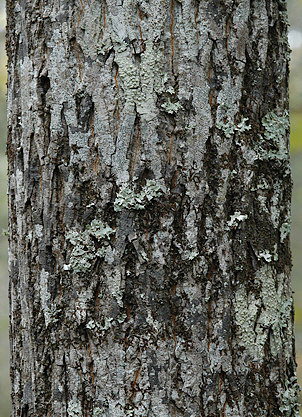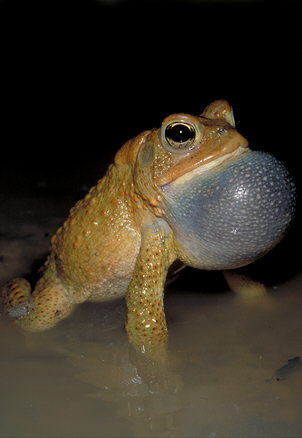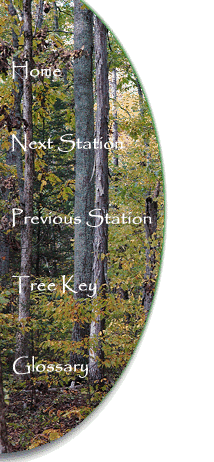| |
|
| |
 |
| |
Bitternut Hickory Leaf |
Identification:
The leaves are
6 inches to 10 inches in
length, and are alternate,
pinnately
compound, shiny above and paler
and lightly hairy below. Each leaf has 7 to 11 sessile
leaflets. The
margins of the leaflets are
serrate. The
rachis is slender and slightly hairy.
Compare these leaves to those of the Shagbark Hickory, and to those
of the White and Blue Ashes. Note the
alternate pattern of the
leaves and branches, which distinguishes this tree from the ashes,
which are opposite.
| |
|
 |
|
|
Bitternut Hickory Bark |
The bark of the Bitternut Hickory is
a slate gray. In older trees the bark becomes shallowly
fissured with interlacing ridges.
This species is
monoecious, with
both male and female catkins appearing on the same tree. You
may want to use binoculars to help spot the catkins.
Other Uses
and Lore:
The wood of the bitternut hickory has been used for
tool handles and agricultural implements. It is also used in the
curing process for curing hams and bacon. Early settlers
pressed an oil from the nut, which some used as a remedy for
rheumatism, while others used it to fuel crude lamps.
The nuts are eaten by a wide variety of wildlife,
including wild turkey, squirrels, small rodents, raccoon, and
white-tailed deer.
The
Trail From Station Ten to Station Eleven
 |
| American Toad |
From Station
Ten, the trail is pretty flat as it traverses the bottomland area
near the river. As you cross this wetter area and approach the
river, listen for the long high trill of the American Toad.
These amphibians begin calling in early March and continue calling
through the spring months. It is a short distance to Station
Eleven, and it will be on the left side of the trail.
|

